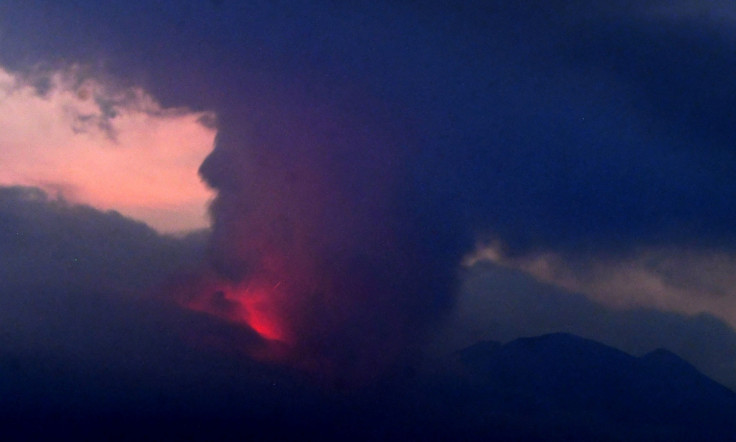Japan: Authorities issue highest alert as Mount Sakurajima erupts
Japan lies on the Pacific "Ring of Fire" and has more than 100 active volcanoes.
Japan's national weather agency issued its top-level alert after the Sakurajima volcano, located in the Kagoshima Prefecture, erupted on Sunday.
Dozens of people have already been evacuated in the region, while residents of Kagoshima Prefecture and Kagoshima City have been advised to stay cautious.
Footage from the scene showed plumes of ash racing upwards and volcanic stones raining down at a distance of 2.5km (1.5 miles) from the volcano. However, no damage to life or property has been reported so far, per a report in The Independent.
The volcano was previously an island until a huge eruption in the early 20th century sent lava down to the water and created a link to the surrounding land. It is one of Japan's most active volcanos.
The researchers had earlier said that the volcano is due for a major eruption within the next 30 years. An eruption in 1914 killed as many as 58 people and caused widespread flooding in the city of Kagoshima.
The study was led by scientists at the University of Bristol and found that the ground around it has been continually rising, which implies that its magma reservoirs are continuously expanding.
"The 1914 eruption measured about 1.5 kilometres cubed in volume – a massive event. From our data we think it would take around 130 years for the volcano to store the same amount of magma for another eruption of a similar size - meaning we are around 25 years away," the lead author of the study, James Hickey, said in 2016.
On the Japanese island of #Kyushu there was an eruption of the volcano Sakurajima.
— NEXTA (@nexta_tv) July 24, 2022
Ash column rises to a height of 2.5 km. In the nearby cities declared the maximum level of danger. pic.twitter.com/PK0sXKuLT4
Meanwhile, Japan's nuclear regulators have said that the nearby Sendai nuclear power plant is safe and they have not noticed any irregularities with it.
Japan lies on the Pacific "Ring of Fire" and has more than 100 active volcanoes. It is a horseshoe-shaped belt of fault lines and volcanoes that runs for some 40,000km. Many of the volcanoes in Japan are monitored 24/7 by its Meteorological Agency.























